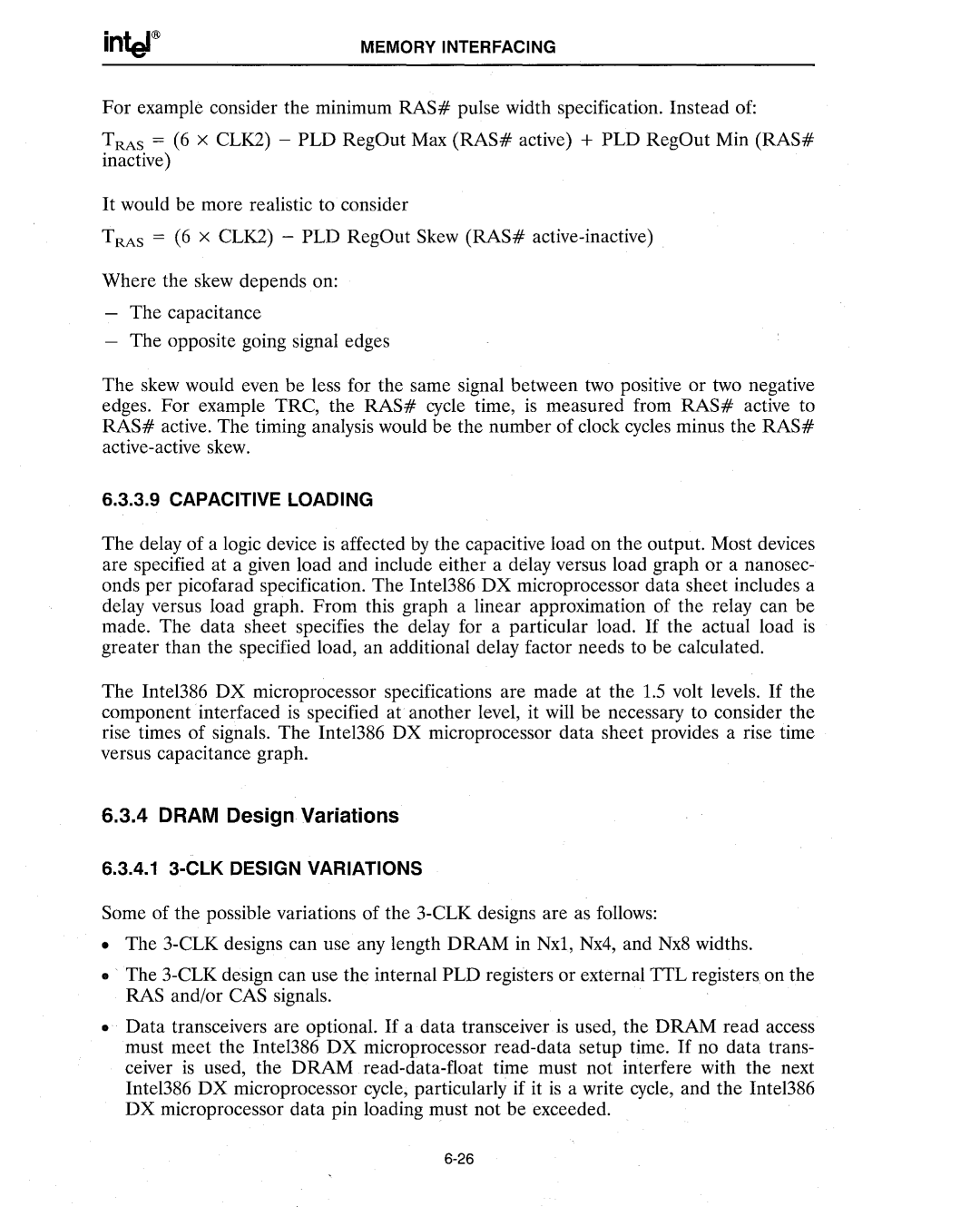
MEMORY INTERFACING
For example consider the minimum RAS# pulse width specification. Instead of:
TRAS = (6 x CLK2) - PLD RegOut Max (RAS# active) + PLD RegOut Min (RAS# inactive)
It would be more realistic to consider
TRAS = (6 x CLK2) - PLD RegOut Skew (RAS#
Where the skew depends on:
The capacitance
- The opposite going signal edges
The skew would even be less for the same signal between two positive or two negative edges. For example TRC, the RAS# cycle time, is measured from RAS# active to RAS# active. The timing analysis would be the number of clock cycles minus the RAS#
6.3.3.9 CAPACITIVE LOADING
The delay of a logic device is affected by the capacitive load on the output. Most devices are specified at a given load and include either a delay versus load graph or a nanosec- onds per picofarad specification. The Intel386 DX microprocessor data sheet includes a delay versus load graph. From this graph a linear approximation of the relay can be made. The data sheet specifies the delay for a particular load. If the actual load is greater than the specified load, an additional delay factor needs to be calculated.
The Intel386 DX microprocessor specifications are made at the 1.5 volt levels. If the component interfaced is specified at another level, it will be necessary to consider the rise times of signals. The Inte1386 DX microprocessor data sheet provides a rise time versus capacitance graph.
6.3.4DRAM Design Variations
6.3.4.1
Some of the possible variations of the
•The
•The
•Data transceivers are optional. If a data transceiver is used, the DRAM read access must meet the Inte1386 DX microprocessor
